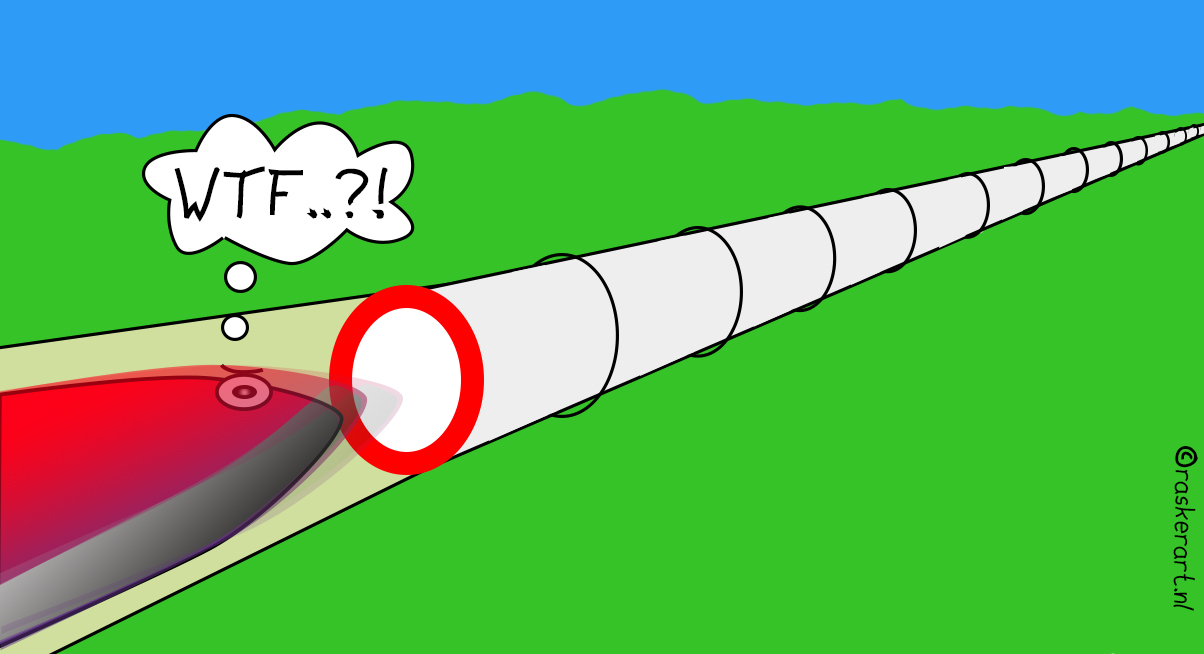
In the weekly ‘follow-up’ section we present a sequel to last week’s best-read article here on Innovation Origins. The story this week was about a study carried out by the province of North Holland and the Hardt Hyperloop start-up.
They state that from 2025 the high-speed tube service can be used for goods and that five high-speed lines for passenger transport are to follow from 2040 onwards. But a three-kilometer test track is to be built in Groningen first.
Someone who doesn’t have that much confidence in this is Wouter van Gessel. He is chairman of the Freedom of Mobility Foundation (Stichting FROM). This foundation is committed to making the best possible use of mobility and sees other opportunities for public transport. According to him, there are a lot of snags and problems involved in the construction of a hyperloop infrastructure. “This idea has existed since the First World War. It’ s not for nothing that it is still just an idea. The animations look fantastic, but what are these based on? It’s very easy to sketch a vision like this for the future without having to bear any responsibility for it. That’s why I think it’s a good idea for them to do some more research first.”
There is a lot involved technically, according to Van Gessel, and there are other alternatives that are safer and faster. “The shuttles in these pipelines will have to be able to withstand pressure variations just like an airplane hull does. That means doors that use a powerful locking system that can cope with the varying pressures. You also need windows to avoid any disorientation. This system is not suitable for The Netherlands. The average speed is not fast enough to be able to save on travel time over short distances. Plus vacuum traction inside the airlocks, shuttles that have to enter and leave the airlocks, and getting in and out of them, all takes a lot of time. And what about safety? What happens in the event of a fire?”
So simple that you don’t even notice it
Van Gessel himself proposes something else: “What do you think the most effective system is when it comes to transporting yourself?”On the other side of the line, it’s quiet for a moment and then he answers his own question. “The escalator. It may sound a bit absurd. But you know where you’re coming from and where you’re going. The frequency is very high and there are no restrictions. It’s so simple that you don’t even notice it. A subway is a system that comes closest to this.”
But in order to achieve this, a transport vehicle must be able to get to a stop unimpeded without having to take other lines into account. “That’s not currently the case on the Dutch railways. We have a very nice, but also very complex network which consists of various speeds and vehicles. An intercity (IC) train must as a matter of course always watch out for local commuter trains or freight trains.”

Separate high-speed lines from local commuter and freight lines
That’s why he thinks it’s a good idea to separate intercity and local commuter trains. “The track that is now in place is perfectly suitable for the current commuter trains. But the present-day ICs are too slow. We are working on two lines. The Almere-Utrecht-Breda line and the airport line that connects all airports. At the moment Eindhoven is still difficult to reach. If you stop in Breda, you can also connect to the existing high-speed line (HSL) trains so Paris and Brussels are also within reach. Connecting airports enables airlines to spread their flights more effectively. For example, you could use an airport for charters and low-cost airlines that would not just bolster the KLM network. If you do this properly, then Lelystad airport would no longer even be needed.”
Maglev trains
“Maglev trains should run on networks like the one Japan is now building between Tokyo and Nagayo, (‘Maglev‘ is an abbreviation for magnetic levitation, ed.) The main advantage of these trains compared to current trains is that they not only shorten the travel time between IC stations but can also accommodate more passengers. At the same time, they will be much safer and require less maintenance,” Van Gessel explains.

But what about their construction? “Maglev train lines can be either underground or above ground. Because they don’t have to stop in small towns, they can basically run above or along the motorway. We see opportunities for Utrecht with the Almere-Utrecht-Breda line. Utrecht wants to have a second IC station in order to relieve the burden on the city center. In that case, the suburb of Lunetten would be a suitable solution for a connection with the Maglev line there. But you could also go underground. Tunnel technology is highly advanced nowadays thanks to the use of modern tunnel drilling machines.”
If London can do it, so can we
“Look at London, they built tunnels there 150 years ago. Back then they didn’t have the knowledge and skills at all, but they succeeded. Just look at the current Crossrail line. These tunnels have been drilled with tunnel drills that have managed to maneuver themselves between other tunnels, building foundations, and the Thames River.”
And what about the costs? Van Gessel points out that he can’t mention a certain amount right away. According to him, it’s all about the whole picture and the Maglev train will eventually replace the current IC and HSL trains. “A vast sum of money is involved in these investments, but it is an investment that we are all part of which is aimed at making The Netherlands future proof. The government should set aside money for this every year and supplement it with European subsidies. It doesn’t have to be done all at once, but something does need to happen. Ultimately, everyone will benefit from this.”

